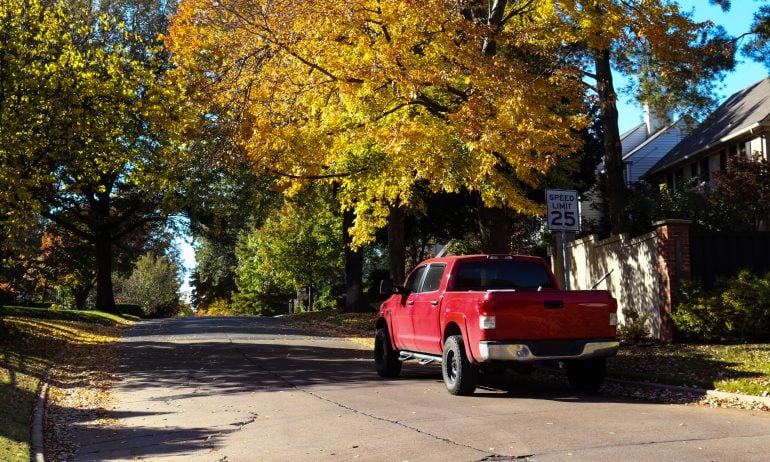Pay-Per-Mile Car Insurance: What You Need to Know

Many or all of the products featured here are from our partners who compensate us. This influences which products we write about and where and how the product appears on a page. However, this does not influence our evaluations. Our opinions are our own. Here is a list of our partners and here's how we make money.
If you have a car but barely drive it, you might find yourself wondering if there’s a cheaper car insurance option beyond traditional coverage. Pay-per-mile insurance might save you money — up to 40% or more, according to some carriers — but only if you truly don’t drive regularly.

What is pay-per-mile car insurance?
Pay-per-mile insurance lets you pay for coverage based on how many miles you drive. Because of this, it’s best suited for people who generally don't drive often.
Pay-per-mile insurance is different from a low-mileage discount offered by some auto insurers. A low-mileage discount offers a percentage off the cost of a traditional policy, while pay-per-mile car insurance determines your rate based on how far you drive.
» MORE: Car insurance discounts guide
Who should use pay-per-mile car insurance?
Pay-per-mile insurance is best suited for people who drive very little, which may include those who:
Work from home.
Attend college.
Are retired.
Take mass transit, walk or use another mode of transportation.
Have a second vehicle they rarely use.
Americans drive around 13,500 miles a year, on average, according to 2022 data from the U.S. Department of Transportation's Federal Highway Administration. It’s difficult to know, though, how little you need to drive to benefit from pay-per-mile car insurance.
Mile Auto states on its website that if you drive fewer than 10,000 miles a year, you’re likely paying too much for traditional auto insurance. However, Nationwide says you’re most likely to benefit from its SmartMiles pay-per-mile insurance program if you drive less than 8,000 miles annually.
How pay-per-mile car insurance works
Pay-per-mile insurance customers pay a monthly base rate, which stays the same, plus a monthly mileage rate, which can change. If the number of miles you drive changes from month to month, your monthly mileage rate will change as well.
To determine your monthly base rate, the company typically uses factors such as gender, age and car make and model, similar to a traditional car insurance quote.
Although pay-per-mile car insurance is different from a traditional auto insurance policy, you still get the same coverage options, such as comprehensive and collision insurance.
» MORE: How to save on car insurance
How your driving is tracked
Insurance companies use technology known as “telematics” to track how far you drive, using an app or device that plugs into your car. Telematics can also track risky habits — think hard braking or quick accelerating. Some pay-per-mile programs, like Nationwide SmartMiles and Metromile, use tracked driving behaviors to price rates or discounts. The safer you drive, the lower your premium may be. Note: Metromile was officially acquired by Lemonade in 2022, but still offers pay-per-mile insurance.
If you’re not comfortable with sharing your data, Mile Auto lets you buy pay-per-mile insurance without using a plug-in device that tracks your driving behavior. Instead, you’ll need to send the carrier a photo of your odometer once a month.

Can you save with pay-per-mile insurance?
The cost of pay-per-mile car insurance varies by insurer and how much you drive. And like a traditional auto insurance policy, your own driving history and personal characteristics are used to determine your monthly base rate.
Don’t automatically believe a company’s claims of how much you’ll save — in order to know how much you can save over your current insurer, you’ll need to gather quotes and do some math.
To estimate how much you’ll pay for pay-per-mile insurance, use the following formula:
Monthly base rate + (Per-mile rate x Approximate number of miles you drive per month).
For instance, let’s say your pay-per-mile quote shows a monthly base rate of $34 and a per-mile rate of 5 cents. You generally drive 800 miles a month.
You can calculate your monthly rate as: $34 + (.05 x 800) = ($34 + $40) = $74.
Again, this is only an estimate, and your actual cost per month will vary depending on how many miles you drive.
Not sure how many miles you drive? Keep track of your mileage before trying a pay-per-mile plan. This will allow you to better estimate what your pay-per-mile insurance rate will be.
Companies that offer pay-per-mile insurance
Only a handful of insurers offer a pay-per-mile insurance option. Some companies, like Metromile, specialize in this type of insurance, while a few large insurers, such as Allstate, also offer a per-mile option.
Below are the companies offering pay-per-mile insurance.
Some companies offer “usage-based” car insurance, which monitors your driving behavior to calculate your car insurance costs. This is different from pay-per-mile insurance, which prices your premium based on how many miles you log. While the line between these two types of insurance can feel blurry, this article only highlights companies that offer true pay-per-mile car insurance.
» MORE: Compare car insurance rates
On a similar note...



